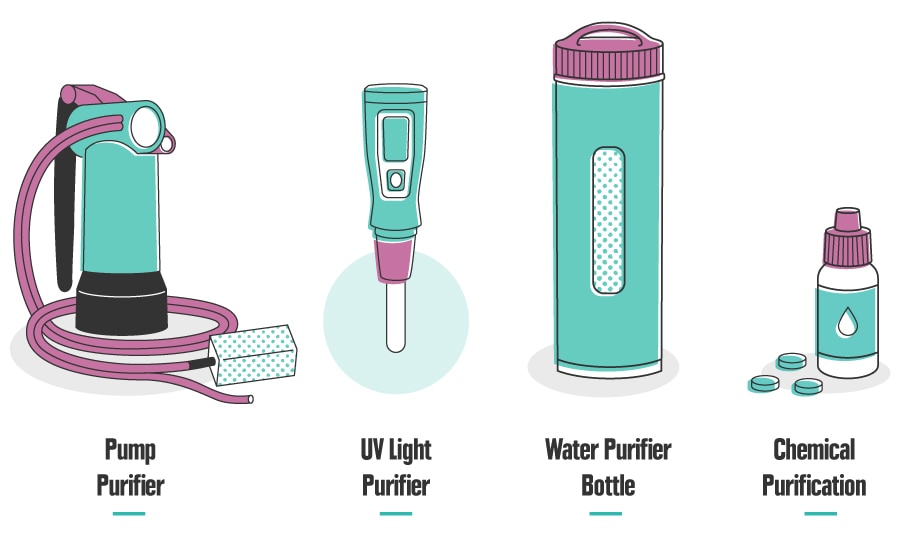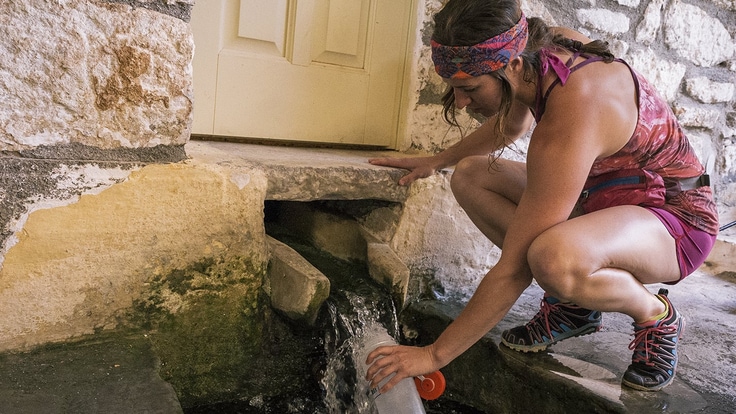Editor's note: This article was published prior to the COVID-19 pandemic. If you need to travel, check the CDC FAQ page about COVID-19 risks for travelers, which provides the latest guidance. For information about outdoor activities wherever you go (close to home is best), read Recreate Responsibly: An Activity-Specific Guide.
While being adventurous is the essence of travel, your sense of adventure should definitely not extend to your gut. Few things can spoil a trip more quickly than getting sick from contaminated water or food. Because water quality varies outside the United States, people often ask which portable water filtration system they should pack.
The best travel water filter is a water purifier as it is also effective against viruses, which can be found in water supplies in developing countries.
This article offers travelers basic water treatment advice. For a deeper dive into the subject, especially if you plan to backpack abroad, read How to Choose a Water Filter or Purifier and How to Treat Water in the Backcountry. For a comprehensive discussion of travel water treatment options, read the Center for Disease Control and Prevention (CDC) article Water Disinfection for Travelers.
Purifiers Versus Filters
Waterborne illness is caused by invisible-to-the-eye pathogens. The difference between a filter and a purifier is that only a purifier is effective against the smallest threats—viruses.
Caused by animal or human contamination of water sources, the following trio of bad actors are listed in descending order of their size:
- Protozoa and cysts, like cryptosporidium and giardia lamblia
- Bacteria, like E. coli, salmonella and campylobacter
- Viruses, like hepatitis A, rotavirus and norovirus
Water filters work by physically straining out microscopic pathogens like protozoa and bacteria, but viruses are too small for most filters to catch. To deal with viruses, water purification is required, and it can be accomplished by one of the following methods:

Pump purifiers: Some top-of-the line filters do in fact have elements with pores small enough to also snare viruses. You pump contaminated water from one container into another container and then drink. You can also buy a purifier system that packages a filter with chemicals that can be added to neutralize viruses after protozoa, cysts and bacteria have been removed by the filter.
UV light purifiers: These light wands emit UV rays that neutralize protozoa, cysts, bacteria and viruses. You stick the wand into a water bottle and then turn it on for brief period of time.
Water purifier bottles: The bottle system's internal cartridge captures protozoa, cysts, bacteria and viruses. You fill the bottle, plunge in its cartridge unit and then drink clean water out of the top of the bottle.
Chemical purification: Works against bacteria, viruses and most protozoa and cysts—chemicals are not particularly effective against cryptosporidium cysts, however. Drop a couple of tablets or a few drops into a water container and wait. Because chemicals are small and inexpensive, they can also be packed as a backup treatment option for another purifier.
Which Purifier Is Right for You?
The chart below gives a quick look at your purifier options:
| Purifier Types | Pros | Cons |
|---|---|---|
| Pump Purifiers |
|
|
| UV Light Purifiers |
|
|
| Bottle Purifiers |
|
|
| Chemicals |
|
|
Boiling
If no other option is available to you, and you have a basic cooking setup, you can always boil your water. Boiling for a minute does the trick, taking care of the big three pathogens: protozoa, bacteria and viruses.
Other Illness Risks for Travelers
The Center for Disease Control (CDC) offers additional tips to avoid waterborne illness while traveling. Because disease-causing microorganisms can find their way into your system in ways other than your drinking water, the CDC's recommendations include avoiding the following:
- Raw fruits and vegetables, unless you can peel and clean them with purified water
- Street food, because food-handling standards might not be up to snuff
- Tap water in developing countries
- Fountain drinks, which are made with local tap water
- Ice, which is also made using local tap water
